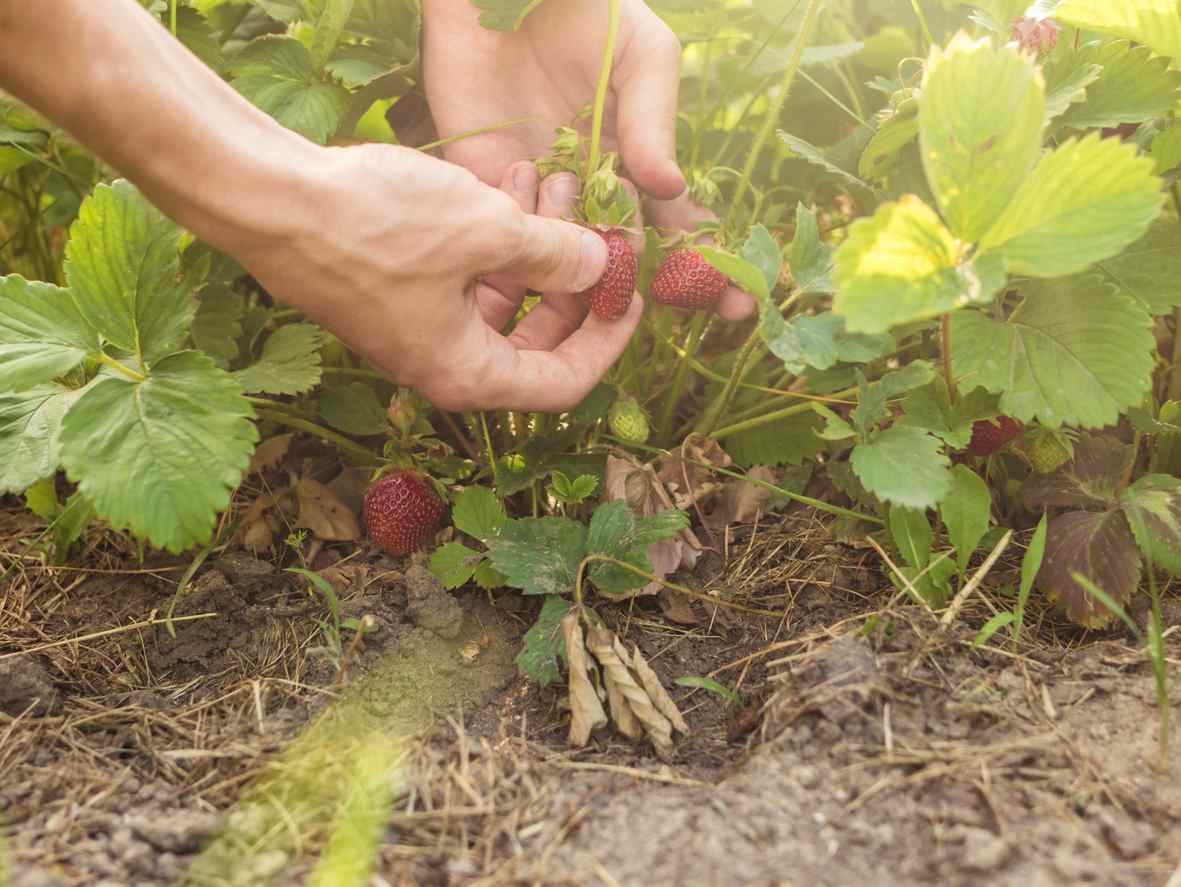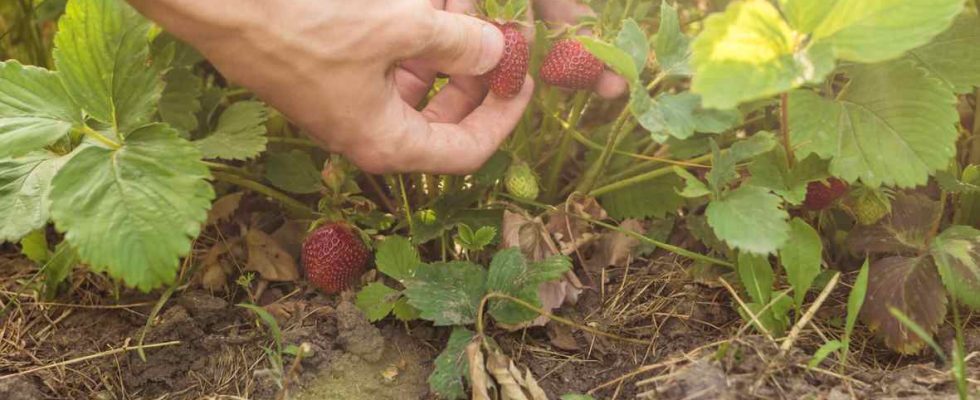
Some information about strawberries
Here are some general points about strawberries that will help you better know and understand these plants:
- Of the Rosaceae familythe same as roses, strawberries are very hardy perennial plants grouped into two categories and more than 600 varieties which are differentiated by the size, shape and flavor of the fruits, as well as by the color of their flowers and their fruiting period.
- A strawberry plant is deciduous in its entirety, that is to say that its leaves and the peduncles which carry them dry and fall in autumn, then grow back in spring.
- In summer, the strawberry plant produces creeping stemsthe stolons, which can take root to give birth to a new strawberry plant.
- We talked about two categories of strawberries, in this case, they are everbearing and non-everbearing strawberries.
Non-blooming strawberries
There Gariguette is one of the most famous varieties in this category which also includes the strawberries Cigaline, Ciflorette, etc. A non-everbearing strawberry plant is a strawberry plant that only flowers and produces fruit once a year. This fruiting is certainly more generous, but it is unique during the season.
Everbearing strawberries
Conversely, everbearing strawberries, such as varieties Mara des Bois, Mariguette, etc., offer waves of fruit from June until the first frost. Everbearing varieties can be installed in partial shade, whereas strawberries generally need to be installed in a sunny location with light, drained soil.
When to plant strawberries?
To ensure abundant harvests of tasty strawberries, it is necessary to plant your strawberries at the right time. Here are the best times to plant strawberries:
- From the end of August to mid-October, but outside of heatwave or drought days. By planting your strawberries at this time of year, they will have time to develop a root system that will allow them to give you beautiful fruit the following year.
- In spring, once all risk of frost has passed.
- Some strawberries have the advantage of being able to be planted all year, but depending on the planting time, they may not give you a really bountiful harvest in the first year and you will have to wait until the following year. If you plant your strawberries in the middle of summer, their recovery will be more difficult due to periods of drought.
Where to plant strawberries and in what substrate?
You can plant strawberries both in the ground in your garden or vegetable patch and in pots on your balcony or terrace.
In the open ground
When planting your strawberries in the ground, plan a location exposed to the sun, or in partial shade if you live in a warm region, and a space of 1 m² for 6 plants. When it comes to soil, strawberries are undemanding even if they have a preference for slightly acidic soils, with little or no limestone, rich in humus and fresh, without being humid. Before planting your strawberries, plan to prepare the soil. To do this :
- Remove weeds, roots and large stones.
- Aerate the soil carefully and level it.
- When planting your strawberries, leave a space of around thirty centimeters between them and be careful not to bury the crown.
It is possible to plant strawberries near beans, lettuce or spinach.
In pots or tubs
To grow strawberries in pots or trays, the depth of these containers is of little importance, but their bottom must be pierced and it will be necessary to turn to a well-draining and suitable substrate. Several solutions are available to you :
- You can opt for vegetable soil or horticultural soil. These two types of soil will provide your strawberry plants with everything they need in terms of nutrients.
- You can also prepare a mixture according to the following recipe: one third topsoil and two thirds potting soil. Compared to pure potting soil, adding topsoil will allow the mixture to better retain water and fertilizer.
- Another solution is to mix garden soil with sand and well-ripened compost. You thus promote both drainage and nutrition.
Once the substrate has been purchased or prepared, simply proceed with planting as in the ground after installing a drainage layer at the bottom of the pot with clay balls or gravel, and ensuring that the collar is flush on the surface. You can mulch to maintain some humidity.
What fertilizer for strawberries?
In the case of cultivation in open ground
Strawberries are gourmet plants that appreciate rich soil. This means that before planting them, it is far from useless to amend the soil which will accommodate them. But to do this, it is important to know the nature of the soil in your garden and to take into account the planting period. Here are a few tips :
- If the soil in your garden is naturally limestone, It is recommended to add potting soil composed of peat, cypress or pine needles to the soil. This will allow you to improve the water retention of your soil while providing good aeration.
- If you opt for planting in autumn, turn to slow-release amendments, such as manure, preferably horse manure, because its composition perfectly meets the needs of strawberries. The advantage of a slow release amendment is that it will decompose throughout the fall and winter to ensure a good start for your strawberries in spring.
- You can also opt for well-ripened compost.
- Finally, it is possible to use a background fertilizer like an organic potash which will be adapted to strawberries and will increase their fruiting.
When the soil has been well prepared and properly amended before planting, strawberries do not, in principle, need additional fertilizer. However, if you find that they produce few fruits or more leaves than fruits, it is possible to add natural fertilizer for strawberries in early spring or after the first harvest for everbearing varieties.
In the case of growing in pots or trays
Here too, several solutions are available to you:
- If your strawberries are in the same pot as the previous year or if you planted them in the fall, in the spring, add well-ripened compost or carry out topping. This involves scraping the substrate to a depth of 2 to 3 centimeters and removing it to replace it with new, highly enriched potting soil.
- You can also opt for a slow-release natural fertilizer.
- If you have the impression that your strawberries are suffering from deficiencies, because the leaves and stems are small and scattered, the leaves are stained, the fruits are small, etc., it is advisable to provide them with organic matter, whether in the form of manure, guano, bone powder, etc.

